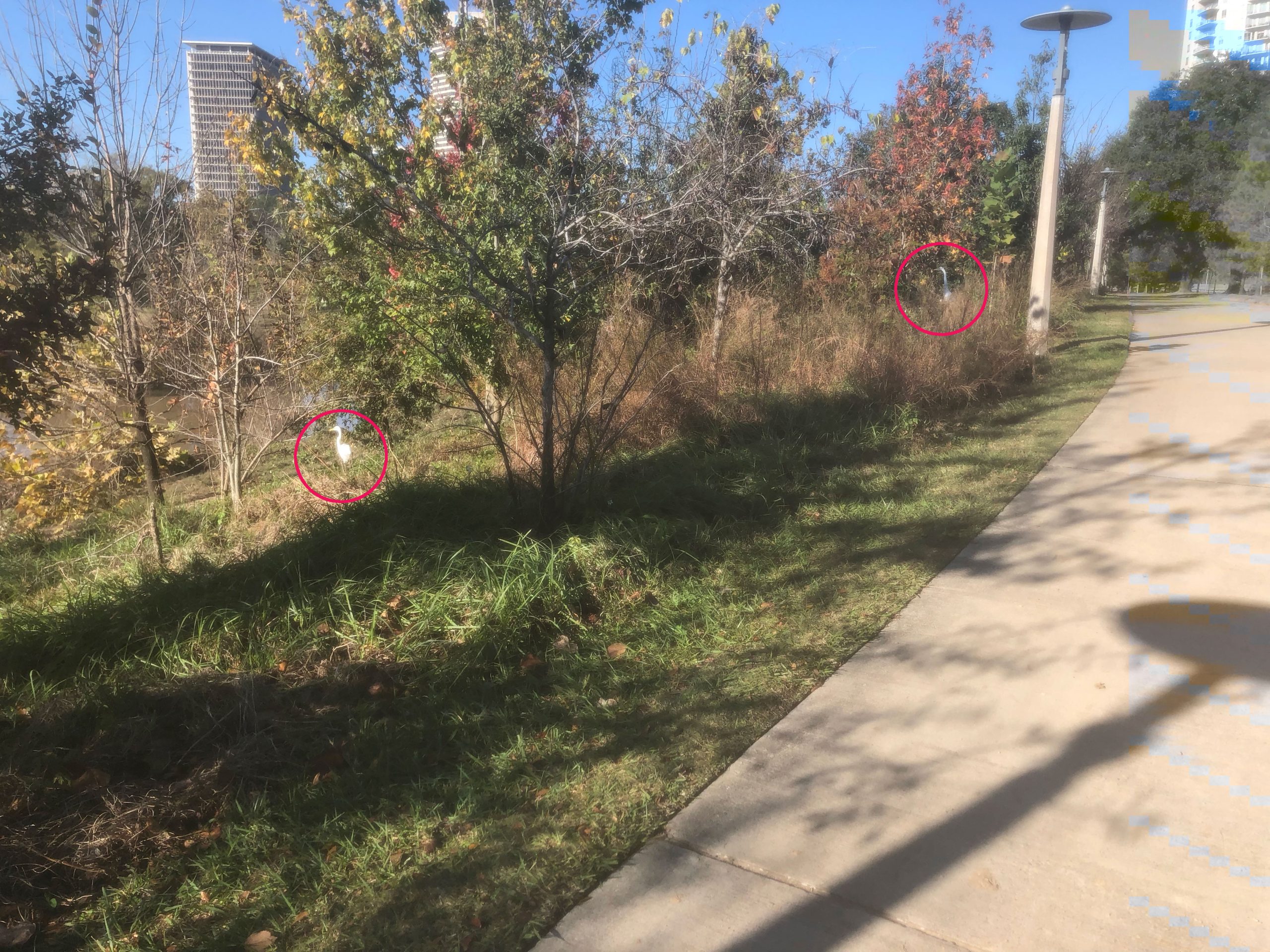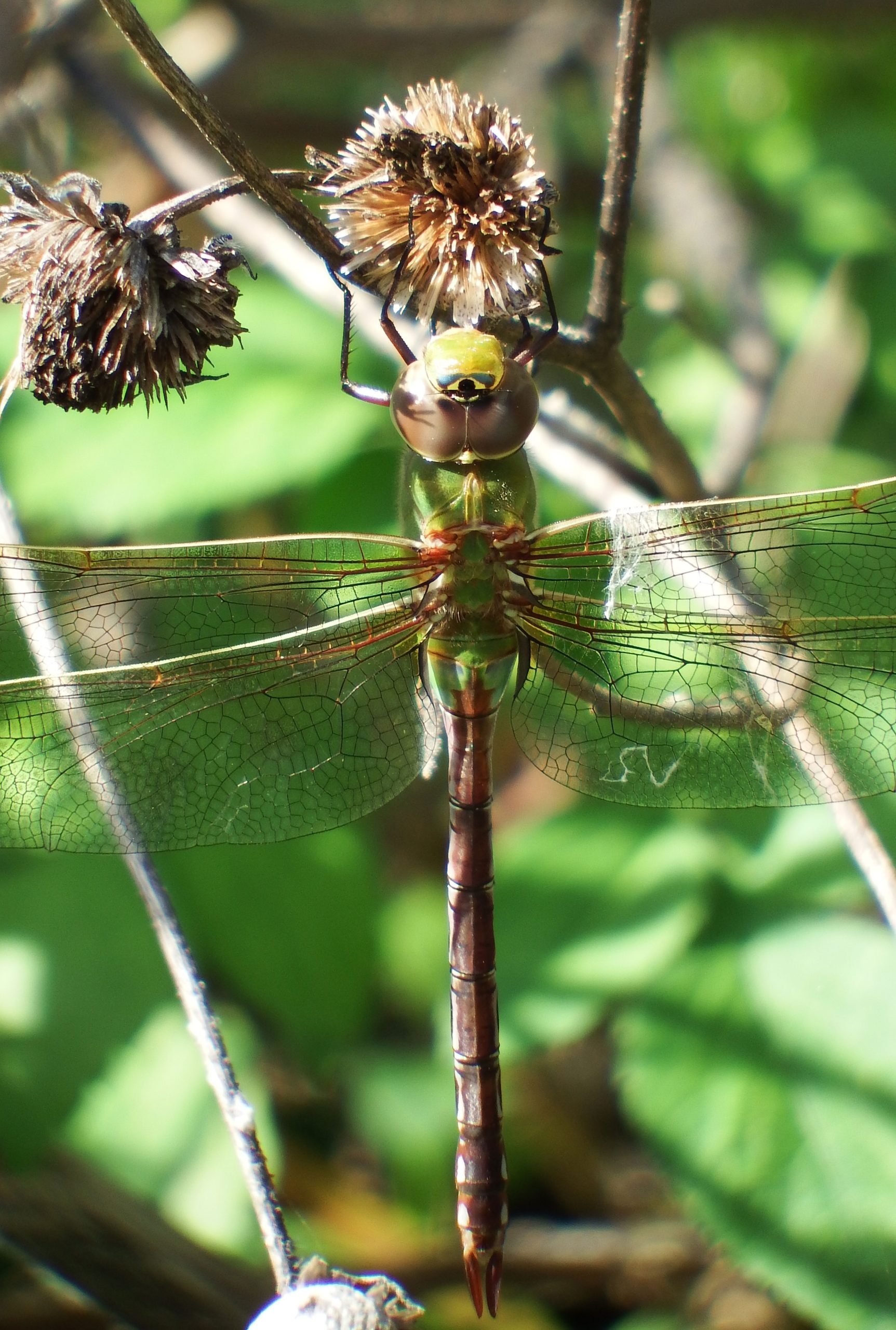In which your naturalist admits to muddled thinking
Last week, I wrote about one weird great egret who wandered the grassy areas of the park, snacking on snakes and beetles. I proposed (and knocked down) three possible reasons and left it as a mystery. Well, the mystery is why I didn’t realize sooner what was actually going on.
My big mistake was assuming that we had only one weird, land-feeding great egret. In truth, we have many and they are all completely normal.
We always see great egrets doing much the same thing: standing in the water looking for food. A great egret hunting on land is not something you see often, if ever, so it was very notable to me when I would see one. Except in our Park, land-feeding great egrets are normal. If our great egrets couldn’t adapt to feeding on land, how would they stay alive when every bayou in the city is out of its banks and racing to the bay?
Last week’s heavy rains produced just that circumstance. The bayous were high and Buffalo Bayou, at least, was out of its banks. A great egret, trying to stand at the shore (which was then above the running paths) would have been swept away. So they moved to higher ground. I was out running when I saw these three (only two are visible in the photo) great egrets feeding away from the bayou.

The minute I saw the three of them, I realized my mistake. Of course, they all feed out of the water from time to time. They have to. And since they all know how to do this, it stands to reason that they don’t have to wait for high water. Feeding on land is just something our great egrets do. No mystery here.
And, I got two legitimate blog posts out of it!
I do feel a little guilty that this is a blog post without any interesting photos; close-up looks at critters are the beating heart of this blog. So let me add this common green darner dragonfly. It is one of the more common dragonflies in the country, but it is still amazing looking, mostly because of what looks to be a third eye in the middle of its forehead. It’s not an eye, it’s just a marking, but it sure is arresting. It probably confuses or scares predators,


